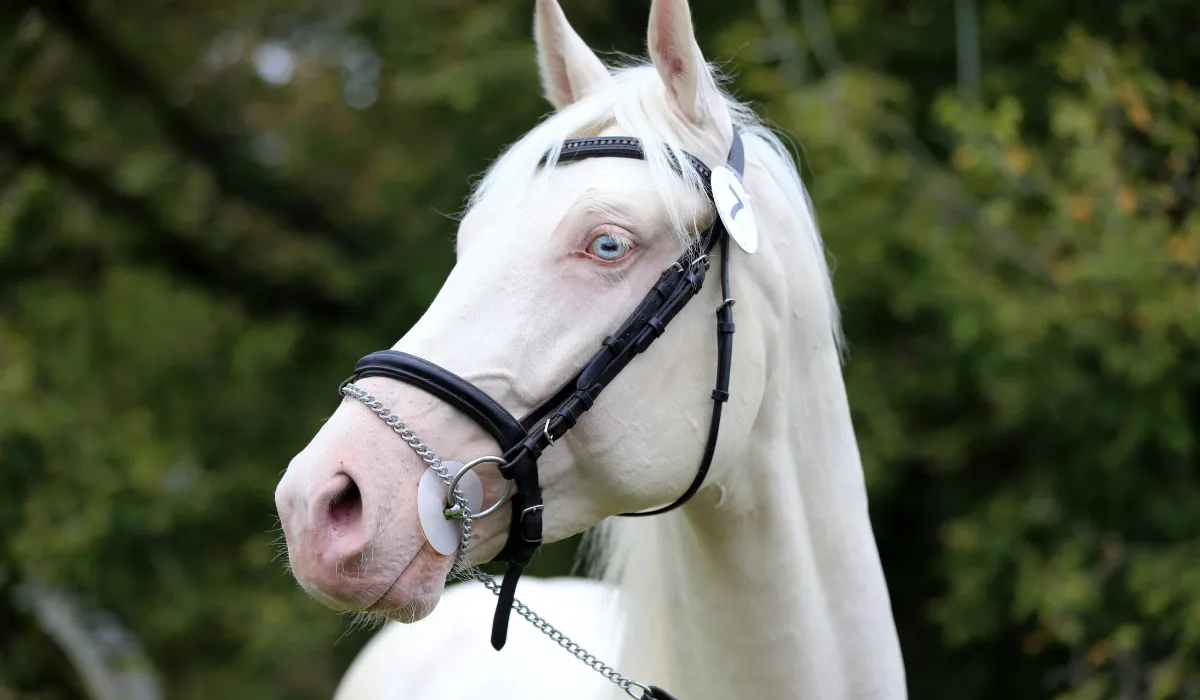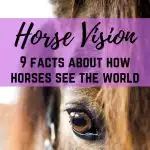Horses – what can’t these magnificent creatures do? We know all about how fast they can run how high they can jump, how deeply they can bond with people, but one area of them often is (no pun intended) overlooked when it comes to learning all about horses. That’s right, it’s all about that horse vision! From how their eyes work to just how well they can see, there are a plethora of facts to learn all about the vision of horses.
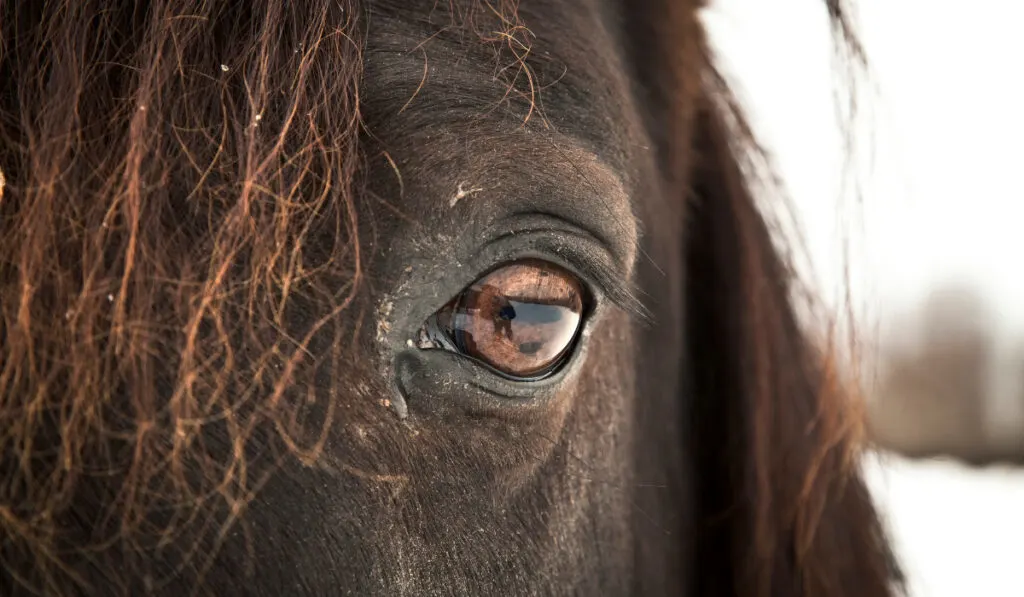
Table of Contents
1. Horses Are Not Colorblind
Just as for years, the common belief was that dogs were colorblind, only able to see in shades of gray, so, too, did that belief extend to horses.
Fun fact though? That’s not actually true.
While, yes, horses do not have the full range of color as humans and is much weaker, they do actually see in limited colors.
Scientific studies were conducted to determine this for a fact. A team of six ponies were monitored by researchers using technology to track and measure the ponies’ reactions to colors, recording the strength of the response from each eye.
The corresponding strength relating to each color allowed the scientists to determine which colors they actually saw and therefore reacted to.
The testing confirmed exactly what colors equines could see and why. Basically, horses have two different types of cones in their eyes, which means they have what is scientifically known as dichromatic color vision (aka having two cones to process colors), whereas humans have trichromatic color vision, or possessing three cones. (source)
Because of these cones and the recorded reactions, it was proven what colors horses can see, too.
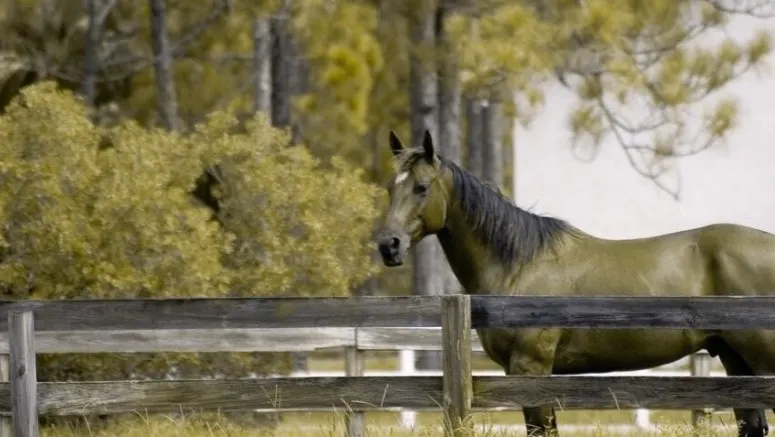
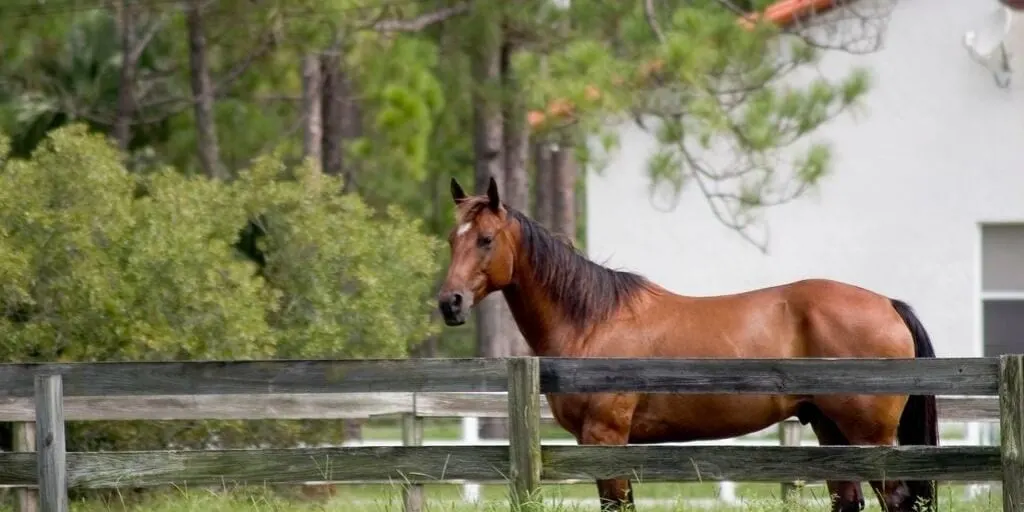
The Colors Horses See
It turns out can see in shades of blue and green along the spectrum, along with associated hues and tones. For comparison, humans see in four main colors: those two plus red and yellow, and varying tones and blends of each.
Since blue and green are the hues of horse vision, that means they cannot see when something is red or yellow, nor pick up red or yellow tones in blends.
However, just because they are unable to see the color red or yellow, does not mean that they can’t see something that is of one of those colors. They see the object, but do not pick up on its color, and it will be a blueish or a greenish-gray.
This is important to remember when it comes to things such as jump courses or new environments. You should take care to have jumps or obstacles painted in colors the horse can distinguish easily.
On the flip-side, you want a horse’s living place to be calm, so avoid too many bold contrasts in blues and greens when it comes to painting barns, stalls, run-ins, etc.
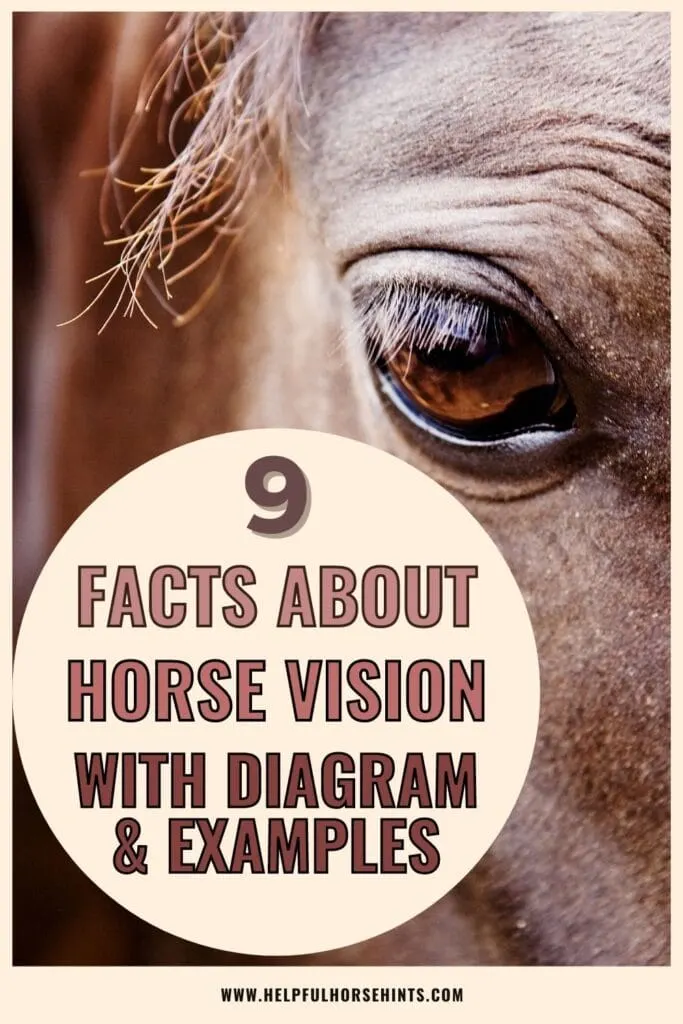
2. Horses Have A Wide Range of Vision
To answer the first two questions shortly: nope. Horses have an extraordinary field of vision – out of the 360 degrees of vision possible, horses’ vision covers around 340 to 350 of those degrees.
That is quite an impressive circle of sight! The downside to that, thanks to the placement of their eye sockets, is that they have distinct blind spots directly in front of them and behind them.
You have probably heard the advice to never approach a horse from behind, but that extends to directly head on as well. You should always walk up to them at an angle so they can actually see your approach.
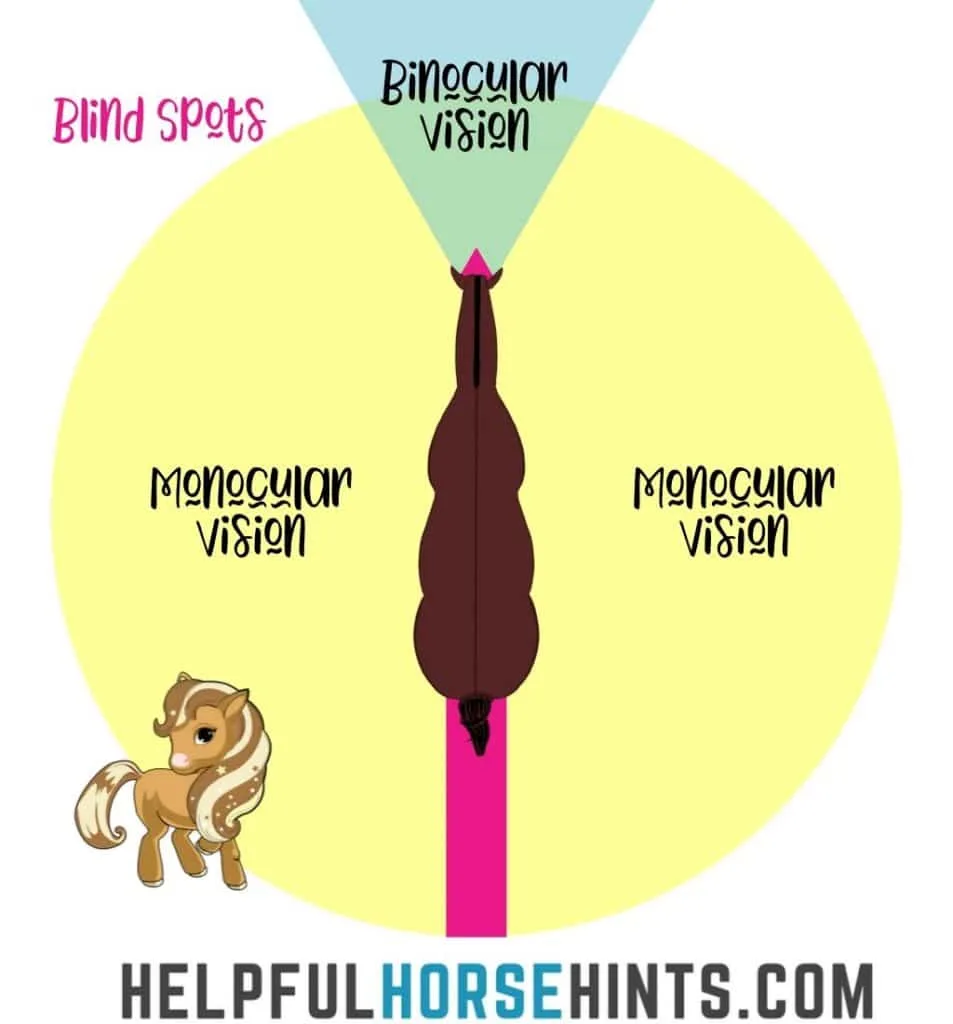
Since horses are naturally spooky and inclined to thing all surprises are predators, if you suddenly appear or suddenly touch them where they can’t see, they are likely to spook or startle, meaning you could be accidentally hurt in the panic.
Their eyes also pick up on less detail than a human’s eye, but, again, they have us beat when it comes to picking up changes in environment that may signal danger.
As mentioned, these blind spots are due to the eyes of the horse being set on either side of its head. This greatly affects the horse’s depth perceptions, too, thanks to this binocular vision.
Horses do not register the full 3D nature of objects, but instead sees them as flat projections, unable to fully determine their spatial relation to other object and all surroundings.
Even though their vision is predominantly lateral, horses can see in the third dimension in certain circumstances, mainly if their gaze is directed immediately forward, such as when they are heading towards and over a jump.
This is further dictated and encumbered by the length of their nose, meaning objects need to be a minimum of six feet in front of them to register as 3D.
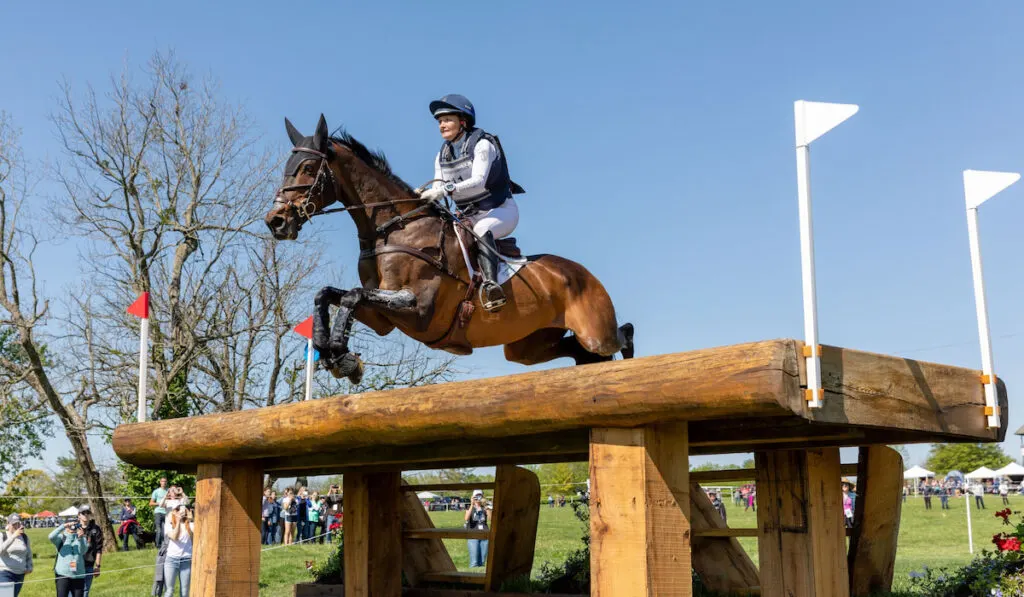
So they can see the jumps coming ahead but once a horse is within leaping distance, they are relying on instinct and rider trust, as they are essentially jumping blind. It’s own nose blocks its immediate vision and so they are jumping based on how they remember the upcoming jump and its positioning.
This is good to keep in mind when jumping, as it reminds you that the responsibility of awareness does indeed rest with the rider. This is also why sometimes a horse may crash right into a jump or misjudge its height. It is not that they were not paying attention, but that they truly could not see it, especially if even briefly distracted.
Further, this explains why horses sometimes turn their heads to the side or at a slight angle when approaching a jump. They are combating their blind spot battle by getting at least a one-sided view of the approaching obstacle. This should be only done momentarily, though, as that can affect their judgement of distance and lead to still crashing into a jump.
3. Horses Can See at Night
While it’s common knowledge that creatures like cats or owls have a night vision “superpower”, it is often wondered if that extends to other animals originating in the wild as well.
When it comes to horses, the answer to seeing well at night lies probably somewhere in the middle between cat or owl and human. (source)
A horses’ eyes have shown to be sensitive and reactionary to low light, and they can see reasonably well at night.
In fact, if you have ever been on a horse at dusk or on a night ride, you may well have noticed how they are still careful and avoid major obstacles. Likewise, they are still apt to spook at shadows and animals, simply because they can indeed see them so well.
This is thanks to a unique light-intensify device that is part of a horse’s eye called the tapetum lucidum. It is a biological layer that reflects light back onto the retina, lighting up the way for them.
This is something that people do not have, meaning we are less good at seeing in low light. The tapetum lucidum is also responsible for giving a horse’s eye that quality of “glowing”, since the light reflecting back on their eyes creates a shine off the eyeball.
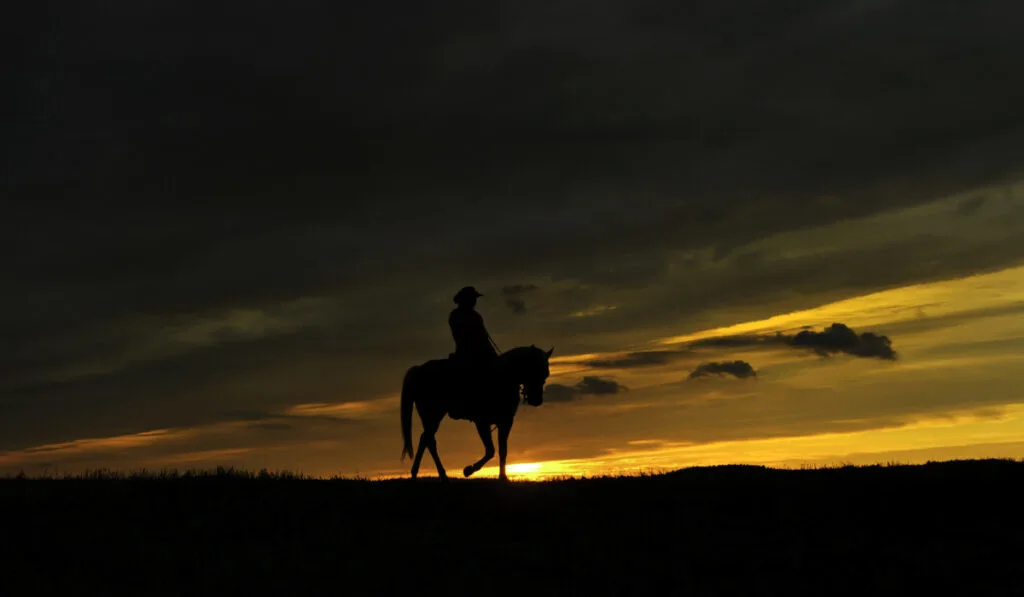
The sheer size of the horse’s eye plus its light-reflecting capability means their nocturnal sight is pretty impressive. Though horses are often thought of as daytime animals, as we tend to spend most of our time with them during the day, horses are naturally adapted to the night.
Out in the wild, they would have to avoid predators at all hours and are always on the defense. Horses are always ready to go and always scanning their surroundings for dangers.
Further, horses’ eyes can adjust to major differences in brightness and shadows falling pretty quickly, but those reactions can always be affected to varying degrees based on circumstances.
If a horse can’t see as well as he would like or if there are too many moving shadows in a dark area, they may be more hesitant to venture forward, simply because they don’t know what is ahead.
That reluctance can be addressed with training to make them more confident, but it is important to recognize and acknowledge when a horse can’t see and therefore is feeling nervous.
4. Horses That Spook When Nothing Is There
Since horses do not take the time to process what they see and think through what it may possibly be, anything their eye catches that is startling or unfamiliar is a cause for panic. Why? Because they are genetically predisposed to always looking for predators.
As we talked about how meticulously their eyes are designed to be super sensitive, that includes – especially – any tiny movements and irregularities.
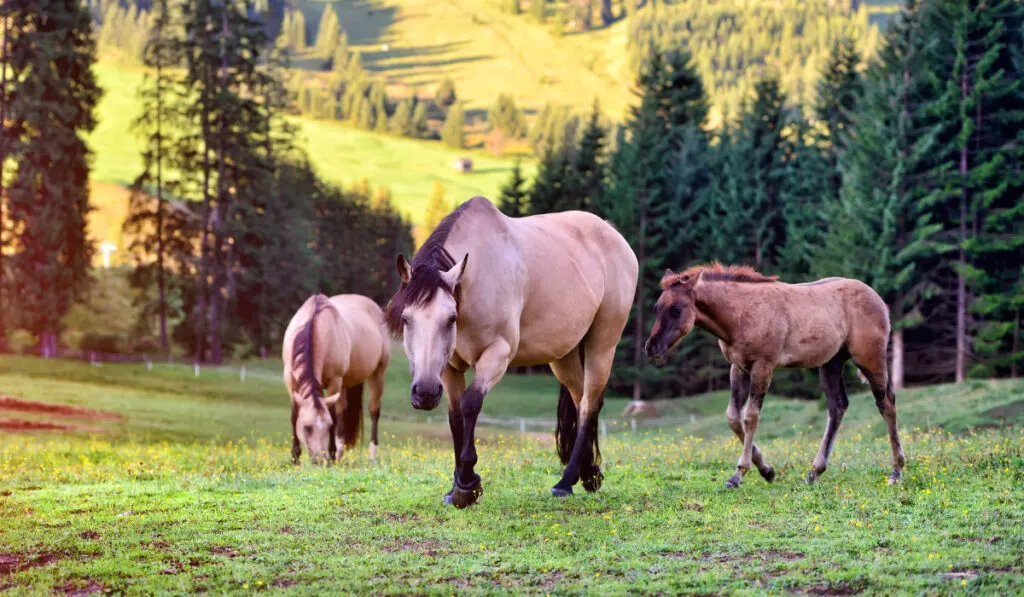
Even today, while being descended from generations of barn-kept horses, a domestic horse still feels those evolutionary warnings to panic at the sight of a plastic bag or even of a familiar barn cat running up behind them.
Those old fears are coded into their genes as being super spooky kept them alive for years out in the wild.
This combination of eye-directly-to-brain processing, hypersensitive eyeballs and subconscious continual scanning for danger means that almost anything a horse sees can be prime fodder for spooking.
5. A Horse’s Eyes Are Sensitive to Movement
We touched on the fact that horses are always genetically prey animals. That means they are always on edge for something to be a predator and are programmed to respond as such.
One of the biggest indicators of danger to horses is sudden movement. So, of course, the horse eye has evolved to be extra adept at detecting motion. (source)
When something is triggered in a horse’s peripheral vision, which already lacks full clarity, they immediately register it. Their eyes are incredibly sensitive.
Because of this, a horse will not be inclined to pause, turn its head, study a movement more carefully and then deduce its threat level. Rather, it works more akin to “slight movement detected – registered – spook!”
You can see this in horses getting jumpy around things that are not threats but that do flap about. Or, on a windy day, when everything is set aflutter, from leaves to clothing to trash and beyond.
Horses struggle with sifting through the information to determine a real threat and reacting quickly to the movement their highly adept eyes pick up on.
6. There Are Several Eye Issues That Affect Horses
Since a horse’s eye is so delicately designed, it is susceptible to any number of issues, including infections, abrasions, etc.
Oftentimes equine eye infections are caused by bacteria or fungi, especially issues that affect the cornea. Horses can also suffer eyelid tumors, generally caused by sarcoids and a form of skin cancer found in horses.
Equine Recurrent Uveitis
Equine recurrent uveitis (ERU) is a disease characterized by eye inflammation. The damage it presents is progressive and can scar inside the eye or cause cataracts, glaucoma, and even blindness.
Physical Trauma / Debris
Many eye infections arise as a result of hazards in the environment, including dust, nails, debris, show nails, etc. In fact, corneal lacerations are a common eye issue.
Most often they are due to a blow, such as a kick or a horse itself running into something or rubbing their eye on an abrasive surface. Though common, this is still considered an emergency. Symptoms can include noticeable blood inside of the eye, pus in the eye, swollen eyelids, squinting and more – quite often, too, there is a defect found on the cornea.
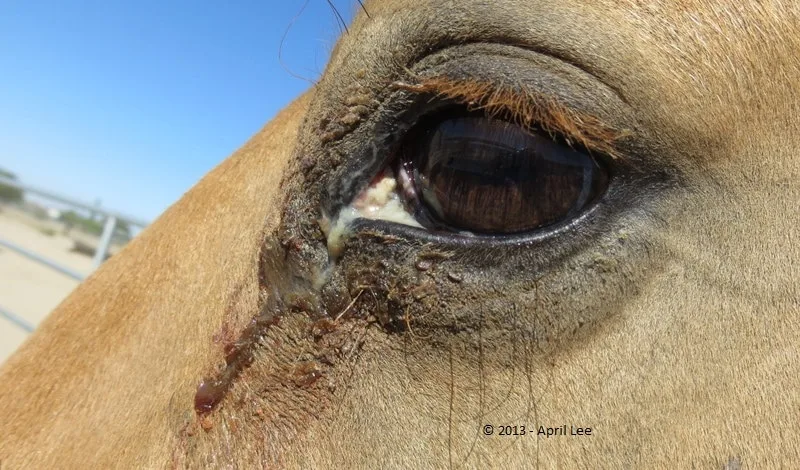
Moon Blindness
Another common eye problem is uveitis, also referred to frequently as “moon blindness.” It is essentially inflammation in the inner part of the eye.
Common signs include swelling and light sensitivity, as well as common cloudiness noticeable the eye. It can affect one or both eyes and is painful to the horse. Uveitis is commonly treated with anti-inflammatories as a first line of defense.
Corneal Ulcers
Superficial corneal ulcers are also a common problem. They often present as tearing of the eye and lid, squinting, swollen eyelids and/or changes in both the color and appearance of the cornea.
Corneal ulcers typically develop as the result of something scratching the outer layer of the horse’s cornea and the severity can often be increased thanks to fungi colonizing if the scratch is not caught early enough.
They are prone to infection and are painful, so generally, treatment includes antibiotics, antifungals (to prevent the aforementioned infection) and anti-inflammatories.
These are just a few of the many eye issues that can affect horses. Without treatment, eye infections, diseases, and injuries can lead to serious conditions, including blindness or loss of the eye.
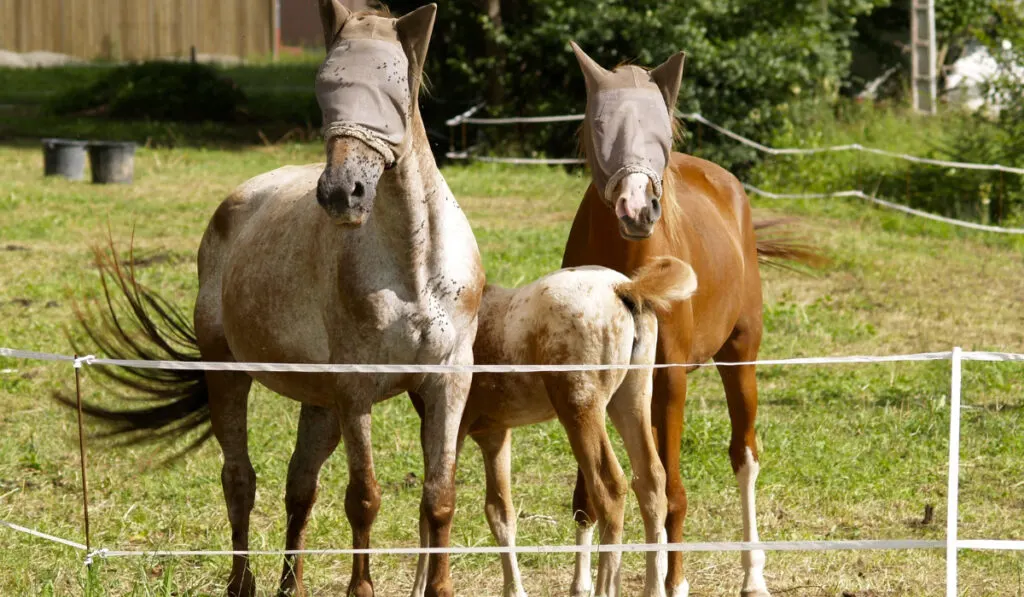
Fly masks help protect horses from insects, dust and debris. You can check out my favorite fly mask here.
Any time you suspect your horse has an issue with his eye it is imperative that you ask a licensed veterinarian to evaluate the horse.
7. Horses Have Big Eyes, Literally
First things first – horse eyes are big. Like, huge compared to people – twice the size of a human eye. It is even one of the largest eyes in the entire animal kingdom and that, somewhat surprisingly, takes into account the eye of a whale and of an elephant.
A horse’s pupil stands out, too. When it narrows in bright light, the pupil narrows to a horizontal slit, rather than the simple smaller dot as in a human eye.
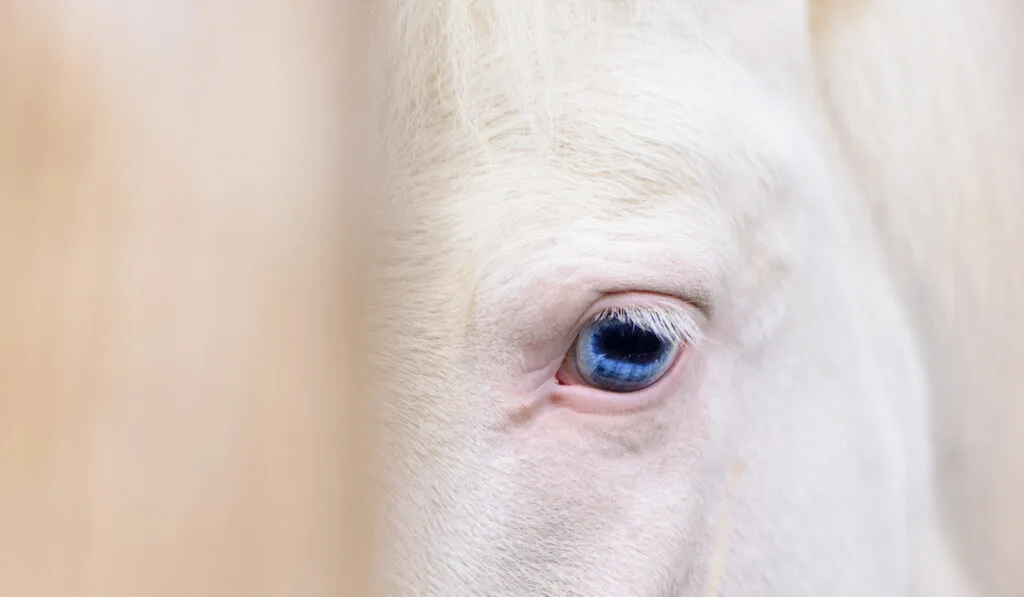
This is a unique adaptation to the horse’s need to keep a broad horizon in view at all times. Though the pupils appear to be smaller just by looking at them, none of the range of vision is compromised and a horse can still see as far and wide.
There are also two uniques anatomical features of a horse’s eye. One is the nictitating membrane, often called a third-eyelid. It is located in the corner of the eye and wipes across the eyeball to remove irritations.
There is also the corpora nigra, which is a group of knobs that are located on top of the iris and act as a producer of sunshade for the horse’s eyes. Though it is a common feature, it often goes unnoticed and can be misinterpreted as a rupture.
8. Horse Eye Color Can Vary
The majority of horses’ eyes tend to stay within one spectrum, but that does not mean that is all they are confined to.
For starters, the iris of a horse’s eye is typically dark brown or black in color, but it can be found in a variety of shades, including hazel, amber, blue and green.
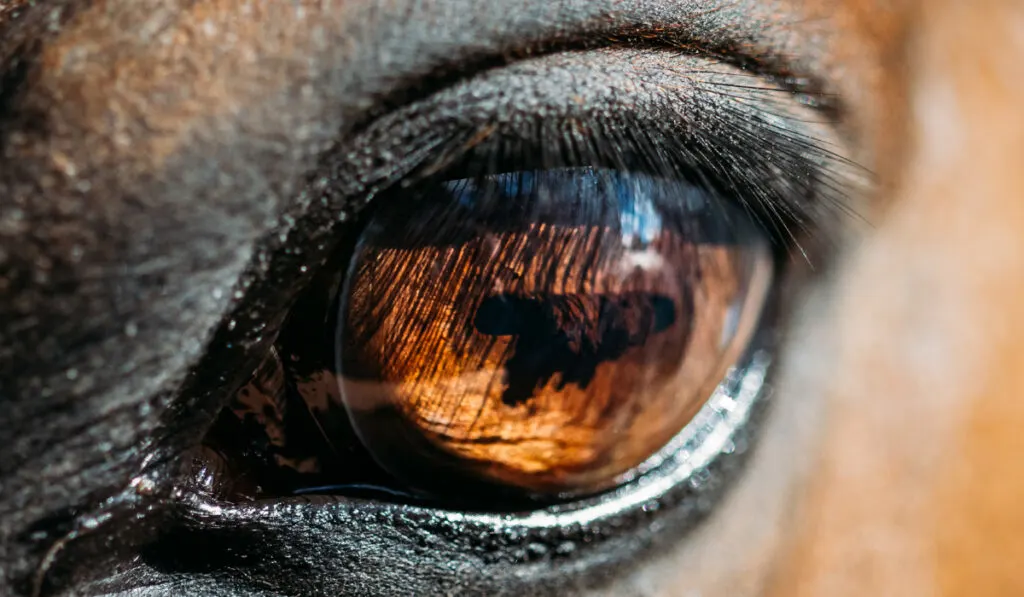
The most common eye color in horses is brown and the rarest eye color is green.
Do Horses Have Blue Eyes? Yes, horses can have blue eyes. This eye color is most common in horses that carry the paint color gene.
Blue eyes tend to be found in paint horses, pintos and appaloosas more than any other breeds, while yellow eyes tend to be found in paso fino horses.
Amber and hazel eyes in horses are actually caused by a dilution of the “champagne” color gene and most often found in light-colored horses such as palominos, duns or buckskins.
Green-eyed horses, then, are especially hard to come by and are only found in cream-colored horses.
Multi-Colored Eyes
Another thing to note is that horses can also have multi-colored eyes. In these rare cases, the eye will be mainly one color but with a noticeable fleck of another color.
Additionally, a horse may have two different colored eyes. It isn’t uncommon for paint horses, for example, to have one brown eye and one blue eye.
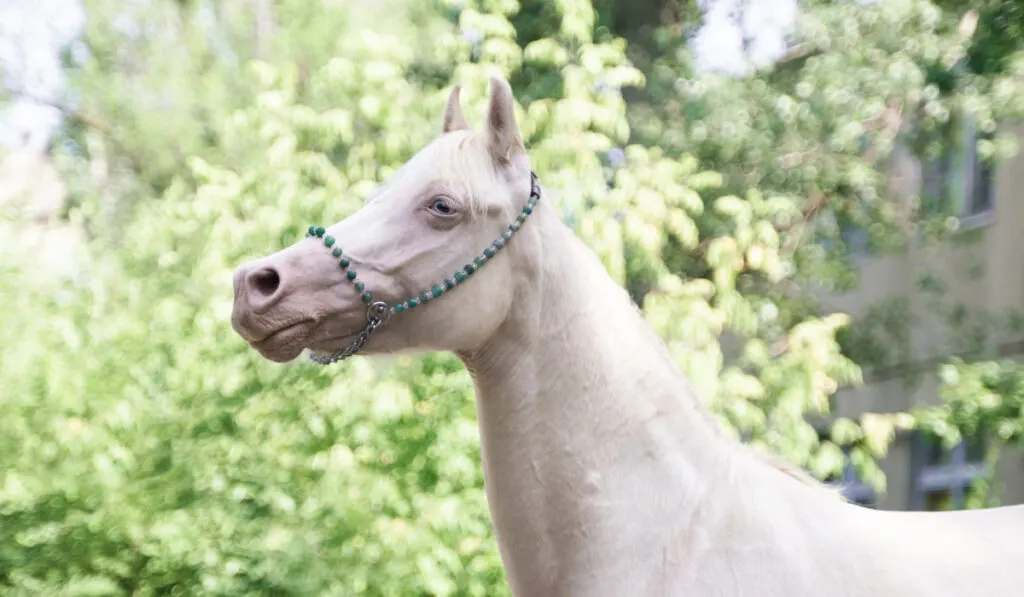
What you won’t see is pink eyes. Pink eyes are typically associated with albino mammals. Horses cannot be albino and can not have pink eyes. Horses that “appear” to be albino are typically cremello, perlino OR dominant white. In each case, the horse typically has blue eyes.
With all of this great information about eye color in horses, keep in mind that it has no bearing on strength and quality of sight.
9. Horses See In Pictures
Horses do not process sight quite the same way as humans. Where we translate what we see into words and ideas, Temple Grandin, noted animal behaviorist, has explained that horses, rather, “think in pictures.” (source)
That is to say, they see in pictures and they think in those same pictures. There is less abstract interpretation with them, so, quite literally, what they see is what they get.
Frequently Asked Questions
No, a horse cannot see directly in front of them or directly behind them. The horse can see 340-degrees around with blind spots directly in front and behind.
A horse has a 340-degree field of vision but can not see directly behind them or what is directly in front.
Modern-day experts believe that horses can see 340 – 350 degrees with blind spots directly in front and directly behind.
A horse cannot se 360 degrees. Their field of view is limited to 340 – 350 degrees.
Blue eyes in horses are not bad. They have no greater impact on health or temperament than a horse with any other color eye.
A palomino horse can have blue eyes. In fact, any color horse can have blue eyes, but they are more common in horses that carry at least one paint gene.